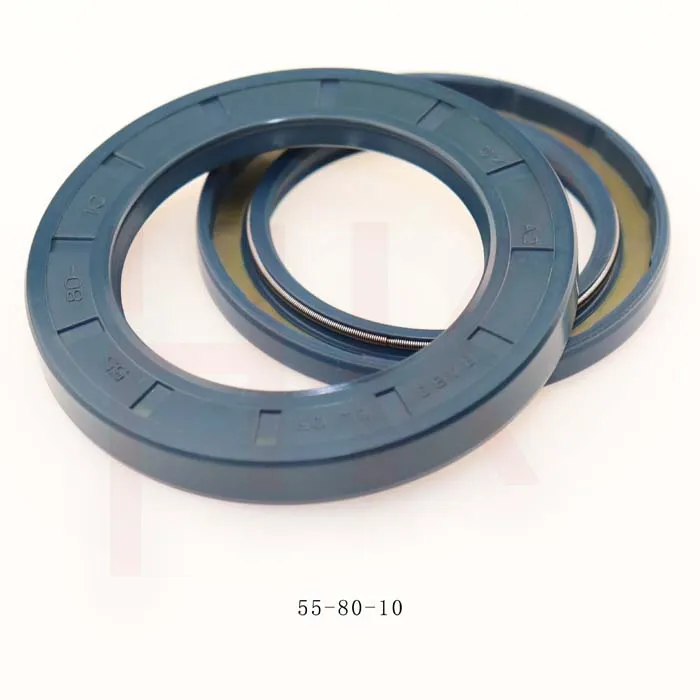Nov . 15, 2024 17:36 Back to list
replacing wiper seal on hydraulic cylinder
Replacing Wiper Seal on a Hydraulic Cylinder
Hydraulic cylinders are essential components in various machinery, providing the force required for lifting, pushing, or pulling heavy loads. Over time, wear and tear can lead to leaks, reducing the efficiency of the hydraulic system and potentially causing damage. One critical part of this system is the wiper seal, which helps keep contaminants out of the cylinder. If you're experiencing issues with your hydraulic cylinder, it might be time to replace the wiper seal.
Understanding Wiper Seals
Wiper seals are specifically designed to prevent dirt, dust, and other contaminants from entering the cylinder as the piston moves. They play a vital role in maintaining the integrity of the hydraulic system. When wiper seals wear out or become damaged, contaminants can enter the cylinder, leading to premature wear of other components and system failure.
Signs You Need to Replace the Wiper Seal
Several indicators suggest that it may be time to replace the wiper seal in your hydraulic cylinder
1. Visible Damage Cracks, tears, or signs of wear on the wiper seal indicate that replacement is necessary. 2. Fluid Leaks If you notice hydraulic fluid leaking from the cylinder, it might be due to a compromised wiper seal. 3. Contamination If your hydraulic fluid appears cloudy or is contaminated, the wiper seal may be allowing dirt and debris to enter the system.
Tools Required for Replacement
To replace a wiper seal effectively, you’ll need a few essential tools
- Wrenches or sockets to remove the cylinder - A seal removal tool or pick - Clean rags or paper towels - Lubricant (hydraulic oil) - New wiper seal - Safety goggles and gloves
Step-by-Step Replacement Process
replacing wiper seal on hydraulic cylinder

1. Safety First Ensure the hydraulic system is depressurized before beginning any work. Disconnect the power supply and wear appropriate personal protective equipment.
2. Remove the Cylinder Using the appropriate wrenches or sockets, detach the hydraulic cylinder from the machine.
3. Disassemble the Cylinder Carefully remove the end cap or rod from the cylinder, taking care not to damage any components.
4. Remove the Old Wiper Seal Use a seal removal tool or a pick to gently extract the old wiper seal from its groove.
5. Clean the Area Thoroughly clean the sealing groove and surrounding components to remove any dirt or debris. This step is crucial, as contaminants can compromise the new seal's effectiveness.
6. Install the New Wiper Seal Apply a thin layer of hydraulic oil to the new wiper seal to help it fit into place. Carefully place the seal into the groove, ensuring it fits snugly without any twists or kinks.
7. Reassemble the Cylinder Replace the end cap or rod and reattach the cylinder to the machine.
8. Test the System Before fully operationalizing the machine, test the hydraulic system to ensure that the new wiper seal is functioning correctly and there are no leaks.
Conclusion
Replacing the wiper seal on a hydraulic cylinder is a straightforward process that can greatly enhance the efficiency and lifespan of your hydraulic system. By recognizing the signs of wear and taking prompt action, you can prevent costly repairs and enjoy smooth operation in your machinery. Always remember to prioritize safety and cleanliness during the process to ensure the best results.
-
TCN Oil Seal Metal Ring Reinforcement for Heavy Machinery
NewsJul.25,2025
-
Rotary Lip Seal Spring-Loaded Design for High-Speed Applications
NewsJul.25,2025
-
Hydraulic Cylinder Seals Polyurethane Material for High-Impact Jobs
NewsJul.25,2025
-
High Pressure Oil Seal Polyurethane Coating Wear Resistance
NewsJul.25,2025
-
Dust Proof Seal Double Lip Design for Construction Equipment
NewsJul.25,2025
-
Hub Seal Polyurethane Wear Resistance in Agricultural Vehicles
NewsJul.25,2025
-
The Trans-formative Journey of Wheel Hub Oil Seals
NewsJun.06,2025
Products categories
















